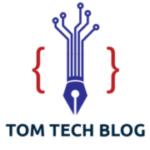Enhancing Workflow in Sound Editing for Film Projects

In film production, sound editing plays a crucial role in storytelling. A well-organized workflow can significantly enhance the quality of the final product, boost team morale, and streamline the editing process. Here’s how your sound editing team can benefit from a better workflow, along with strategies for implementation.
Improved Communication
Benefits:
Effective communication is the backbone of any successful team. By establishing clear communication channels, your team can reduce misunderstandings and increase efficiency. When sound editors, directors, and other departments can easily share notes and feedback, the editing process becomes smoother.
Implementation Strategies:
– Regular Meetings: Schedule brief daily or weekly check-ins to discuss progress and any obstacles.
– Digital Tools: Utilize platforms like Slack or Microsoft Teams to maintain ongoing conversations. Consider creating specific channels for different projects or topics.
– Documentation: Keep detailed notes on feedback from directors and other stakeholders, ensuring everyone is on the same page.
Streamlined File Management
Benefits:
A well-organized file management system prevents confusion and saves time. When sound files, assets, and project files are easy to locate, editors can focus on creativity rather than searching for resources.
Implementation Strategies:
– Folder Structure: Develop a standardized folder hierarchy for all projects. For instance, separate folders for dialogue, sound effects, and music can help locate files quickly.
– Naming Conventions: Use consistent naming conventions for files, including details such as the type of sound, scene number, and take. This practice will enable quick identification.
– Backup Solutions: Implement a regular backup schedule to ensure that no work is lost, and consider using cloud storage for accessibility.
Efficient Use of Technology
Benefits:
Leveraging the right technology can significantly speed up the editing process. Tools that automate repetitive tasks or enhance audio quality allow sound editors to focus on creativity and storytelling.
Implementation Strategies:
– Software Proficiency: Invest in training for your team on advanced features of editing software like Pro Tools or Adobe Audition.

– Plugins and Effects: Explore third-party plugins that can streamline tasks, such as noise reduction or sound enhancement, making the editing process more efficient.
– Automation Tools: Consider using automation tools for tasks like file transfers or batch processing, freeing up time for more critical editing work. Learn more about this
Collaboration and Version Control
Benefits:
In a collaborative environment, multiple team members often work on the same project. A robust version control system helps keep track of changes, minimizing the risk of errors and ensuring everyone is working on the latest version.
Implementation Strategies:
– Version Control Systems: Implement systems like Git for audio files, allowing team members to track changes and revert to previous versions if necessary.
– Cloud Collaboration Tools: Use cloud-based services like Google Drive or Frame.io for real-time collaboration and feedback. This setup allows stakeholders to access the latest edits instantly.
– Change Logs: Maintain a log of changes made during the editing process, documenting what was altered and why. This transparency can help team members understand decisions and improve future projects.
Optimized Project Timelines
Benefits:
An organized workflow leads to better time management. By setting realistic deadlines and milestones, your team can maintain focus and motivation, ultimately resulting in a timely project completion.
Implementation Strategies:
– Task Management Tools: Use project management software like Trello or Asana to assign tasks, set deadlines, and track progress. This visibility allows team members to stay accountable.
– Realistic Scheduling: Create a timeline that considers potential setbacks. Build in buffer time for unforeseen issues, reducing stress as deadlines approach.
– Milestone Reviews: Conduct reviews at key milestones to evaluate progress and make necessary adjustments to the workflow.
Quality Control and Feedback Loops
Benefits:
A better workflow fosters a culture of quality control and continuous improvement. By establishing feedback loops, your team can consistently refine their work and enhance the overall sound quality.
Implementation Strategies:
– Peer Reviews: Encourage team members to review each other’s work, providing constructive feedback. This practice can lead to new insights and improvements.
– Feedback Sessions: Schedule dedicated sessions for directors and other stakeholders to provide feedback on sound edits. Make sure to document this feedback for future reference.
– Iterative Process: Adopt an iterative approach to sound editing, allowing for multiple rounds of refinement based on feedback. This method can lead to a more polished final product.
Enhanced Creativity and Morale
Benefits
A well-structured workflow not only improves efficiency but also fosters a positive work environment. When team members feel organized and supported, their creativity flourishes, resulting in higher-quality sound design.
Implementation Strategies:
– Encourage Innovation: Allow team members the freedom to experiment with new sounds and techniques. This can be facilitated by dedicating time for creative exploration within the workflow.
– Celebrate Achievements: Recognize and celebrate milestones and individual contributions. This practice boosts morale and fosters a sense of teamwork.
– Flexible Work Environment: Create a workspace that encourages collaboration but also allows for focused individual work. Balance is key to maintaining creativity.
Conclusion
By implementing a better workflow, your sound editing team can experience numerous benefits, from improved communication and streamlined file management to enhanced creativity and morale.

Each of these strategies contributes to a more efficient and effective editing process, ultimately resulting in a higher quality film project. In filmmaking, investing time and resources in optimizing your workflow will pay off in the form of a polished final product that meets or exceeds expectations.



